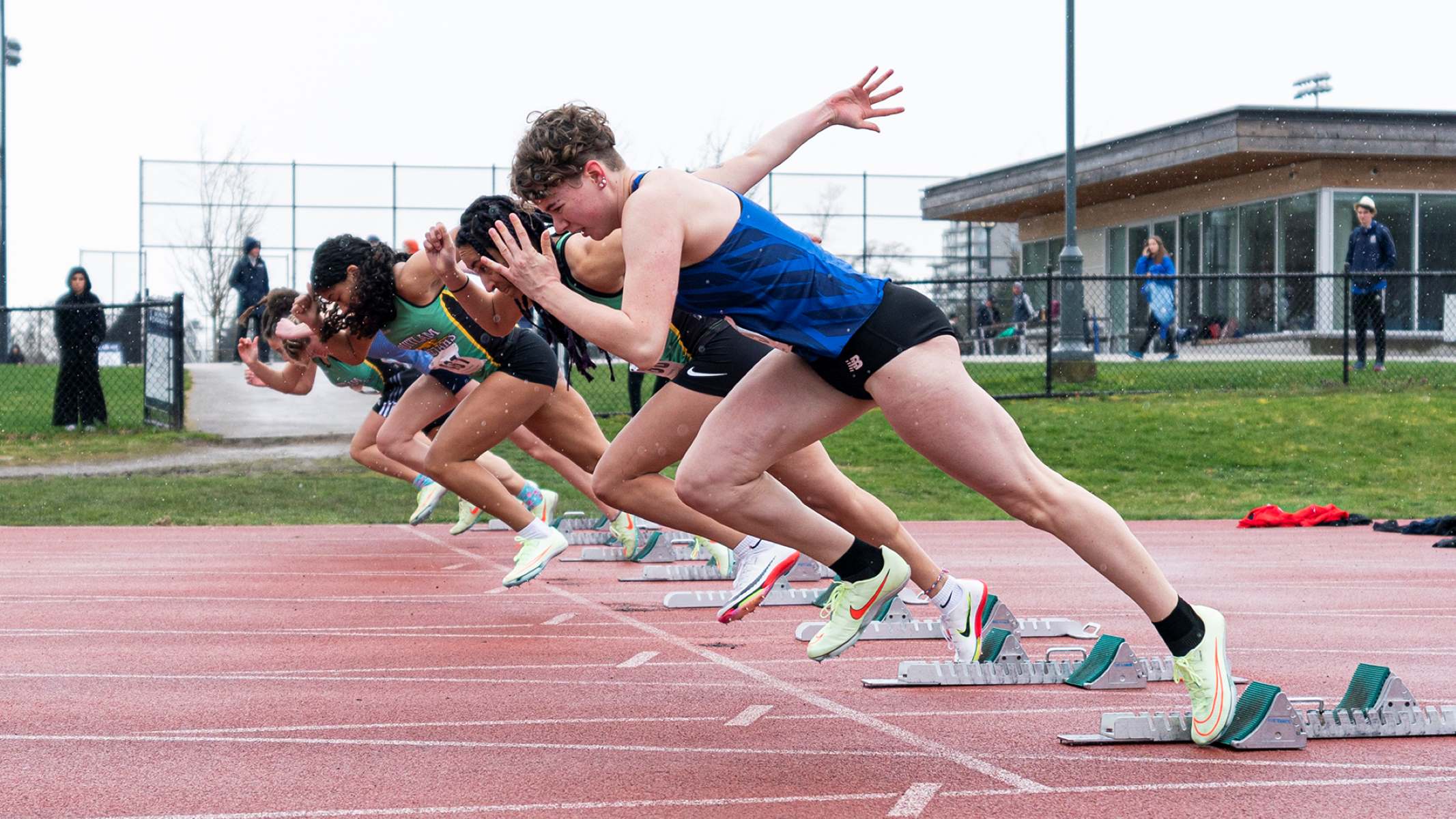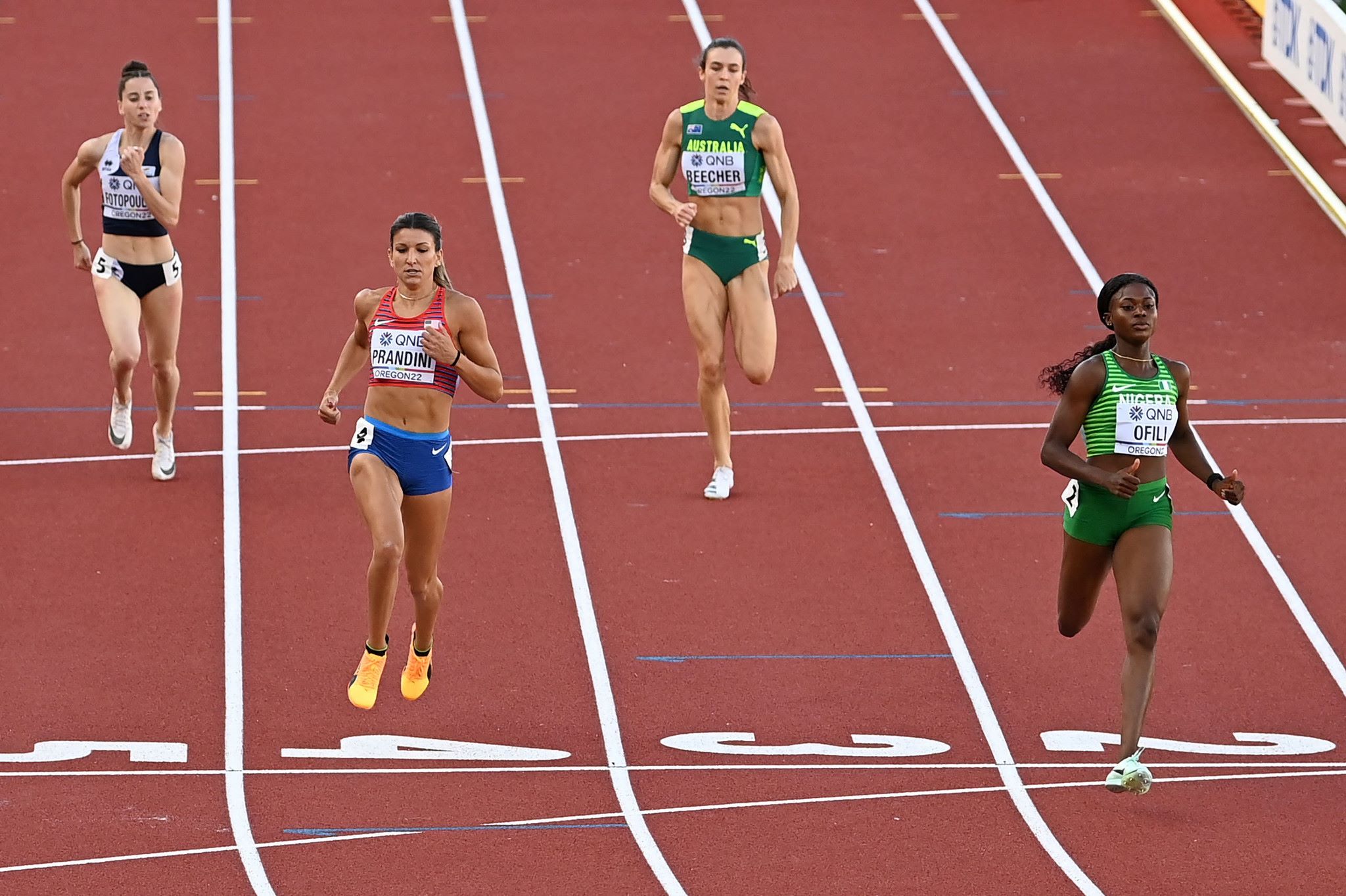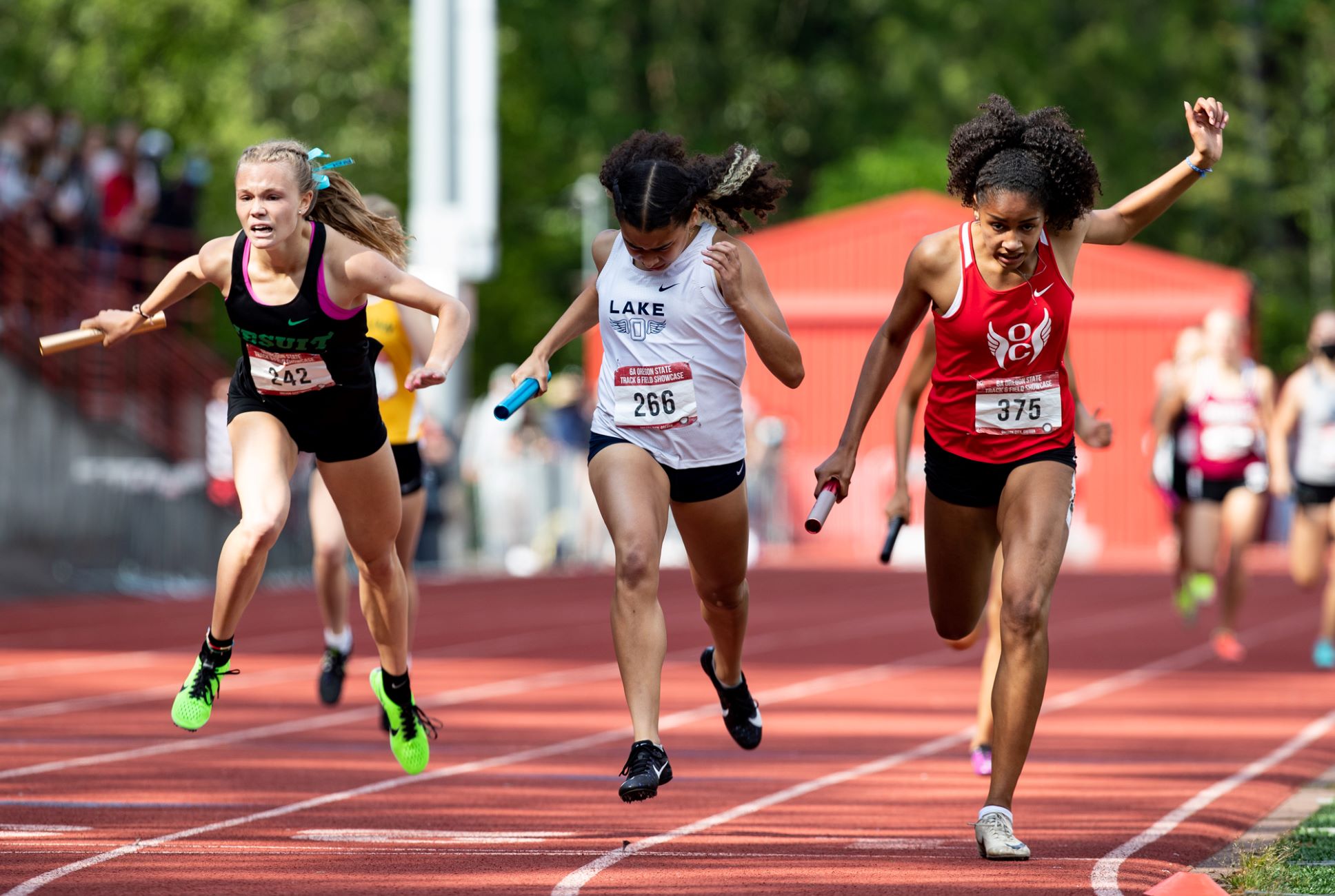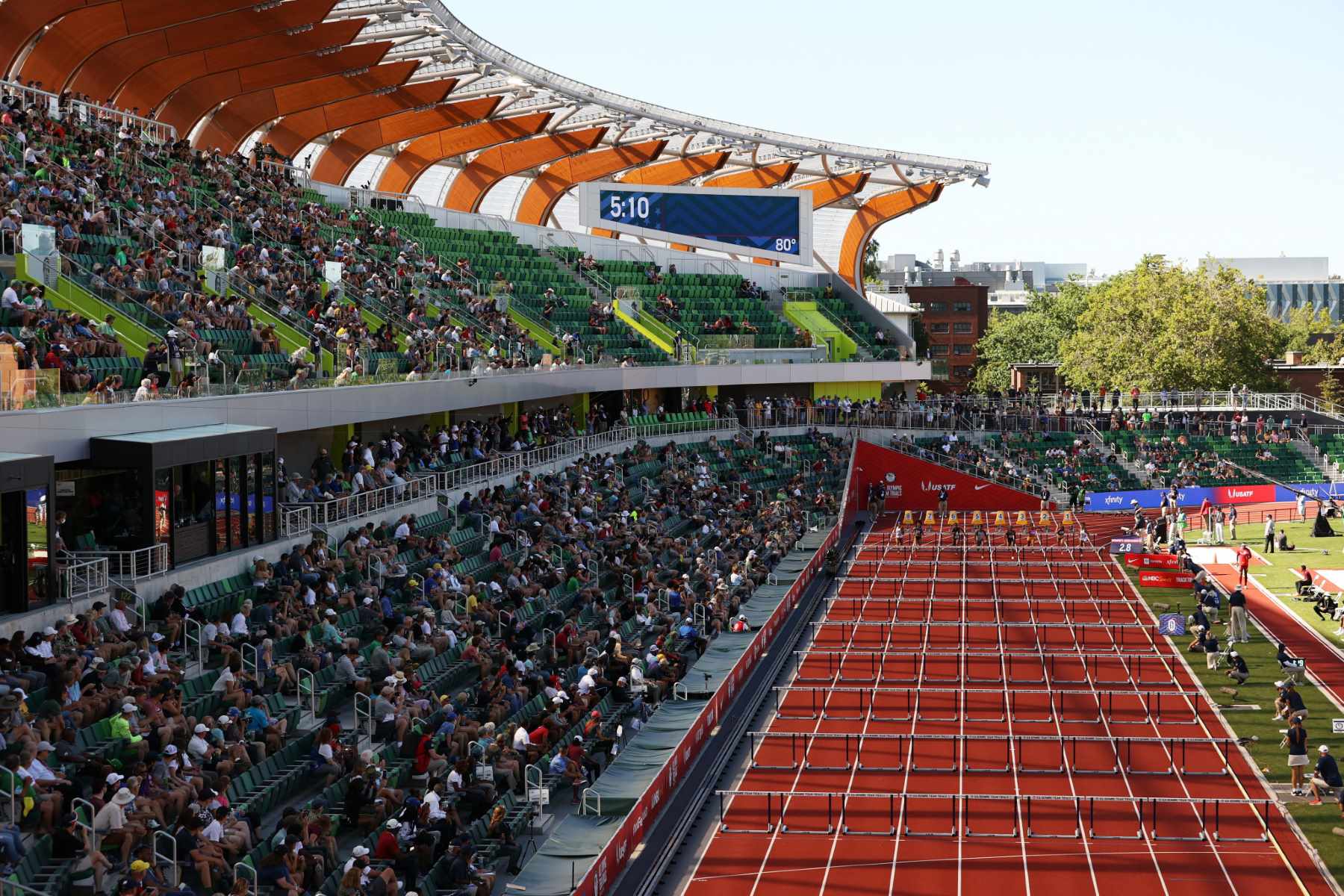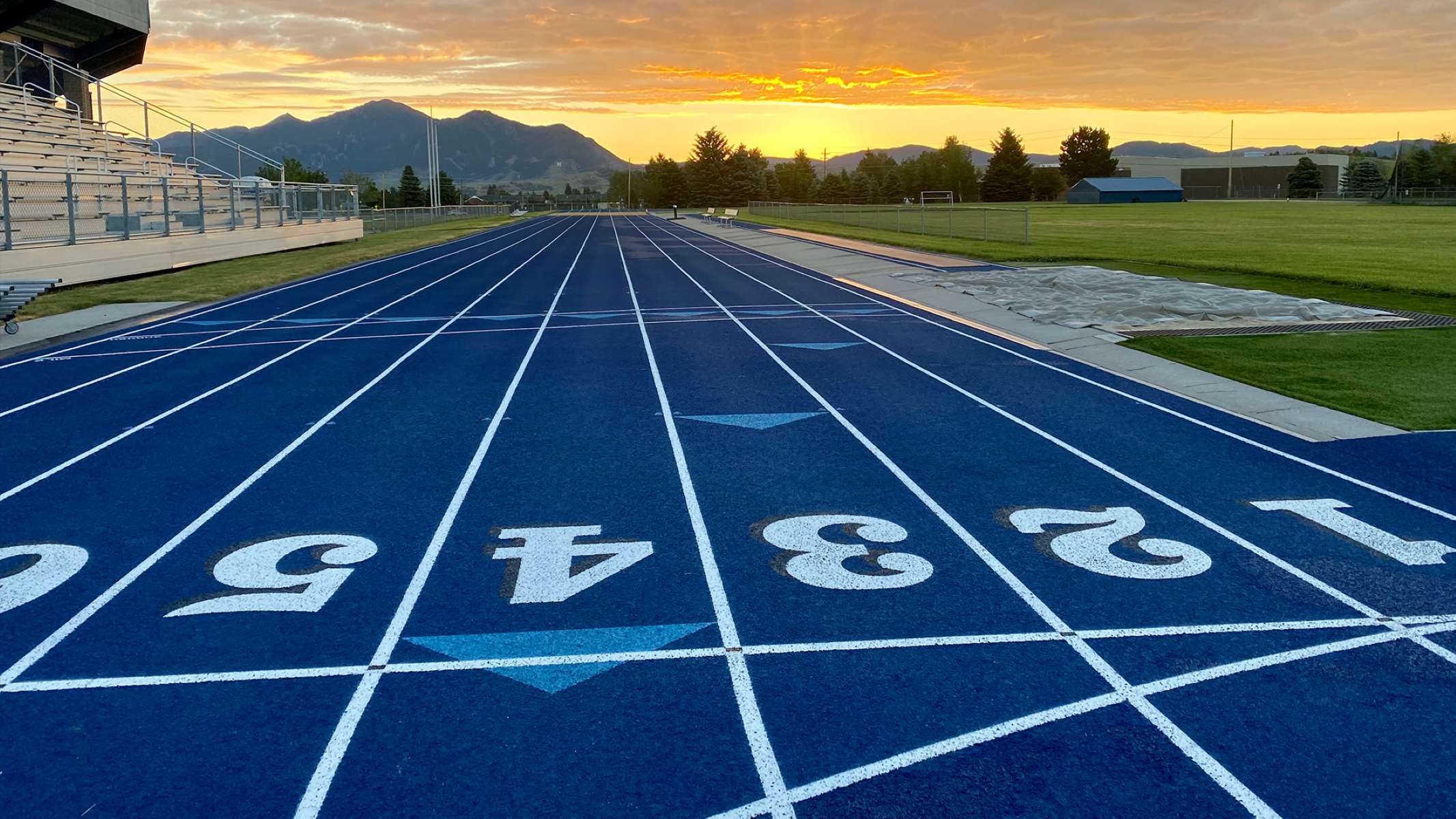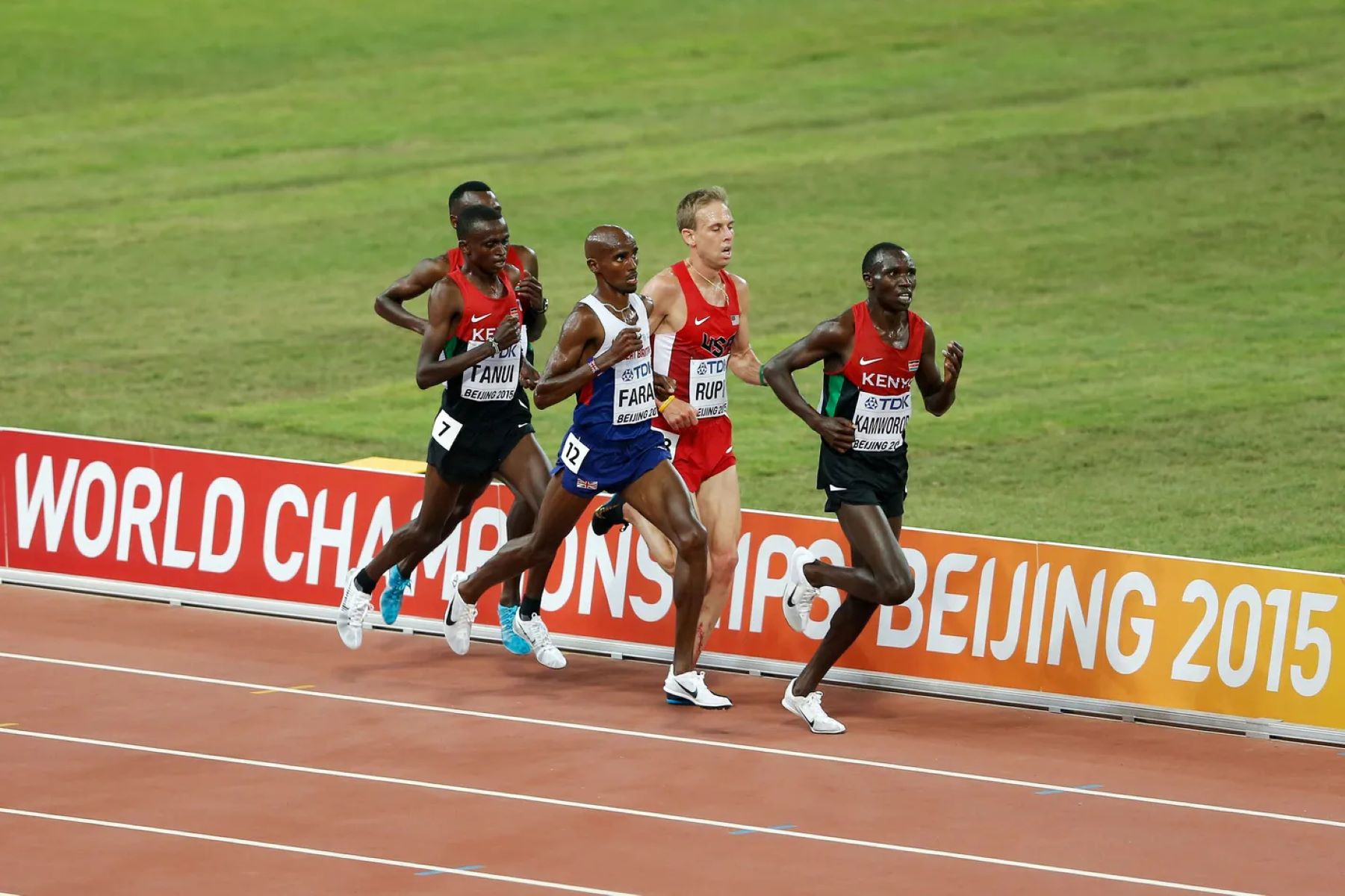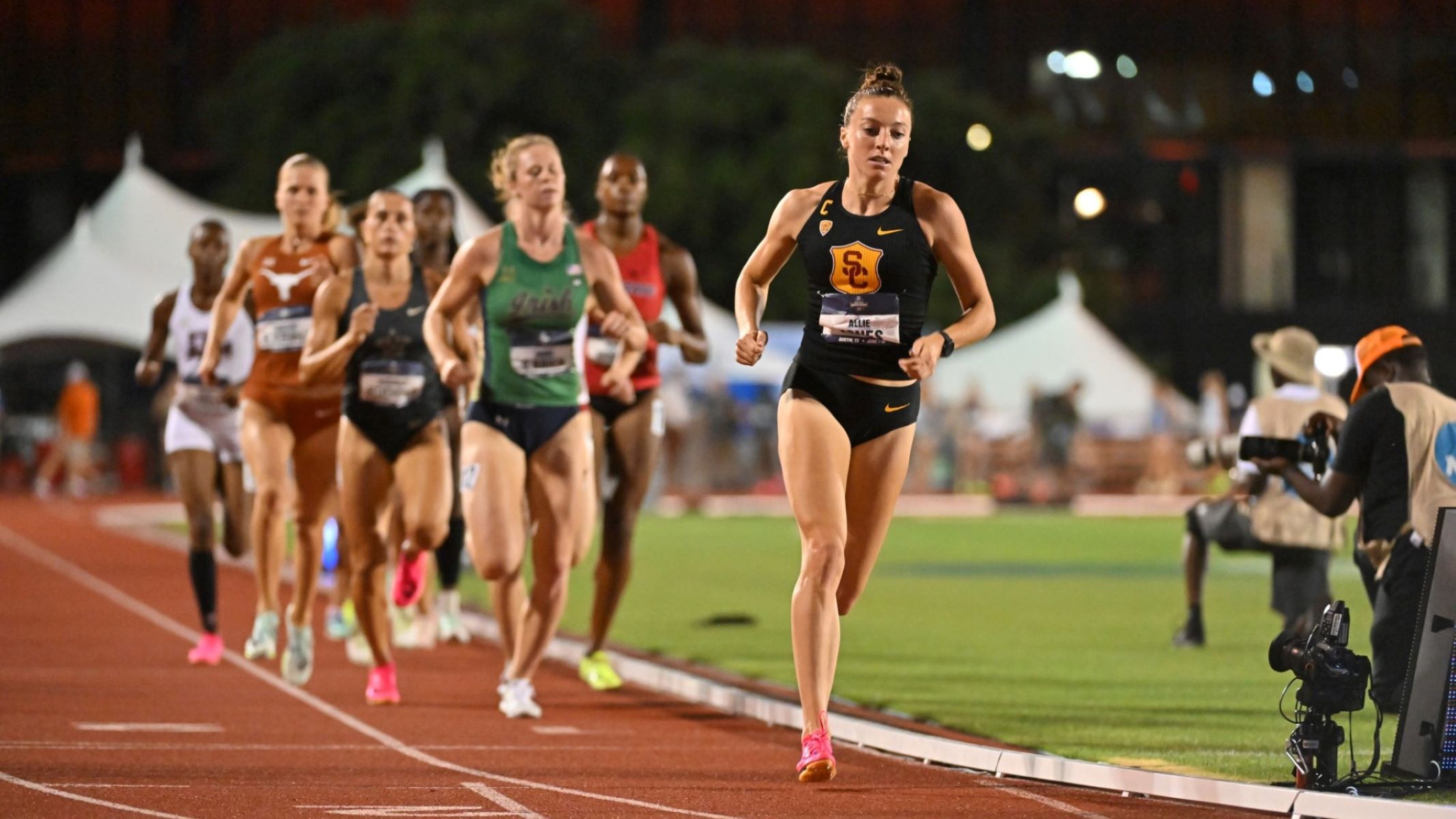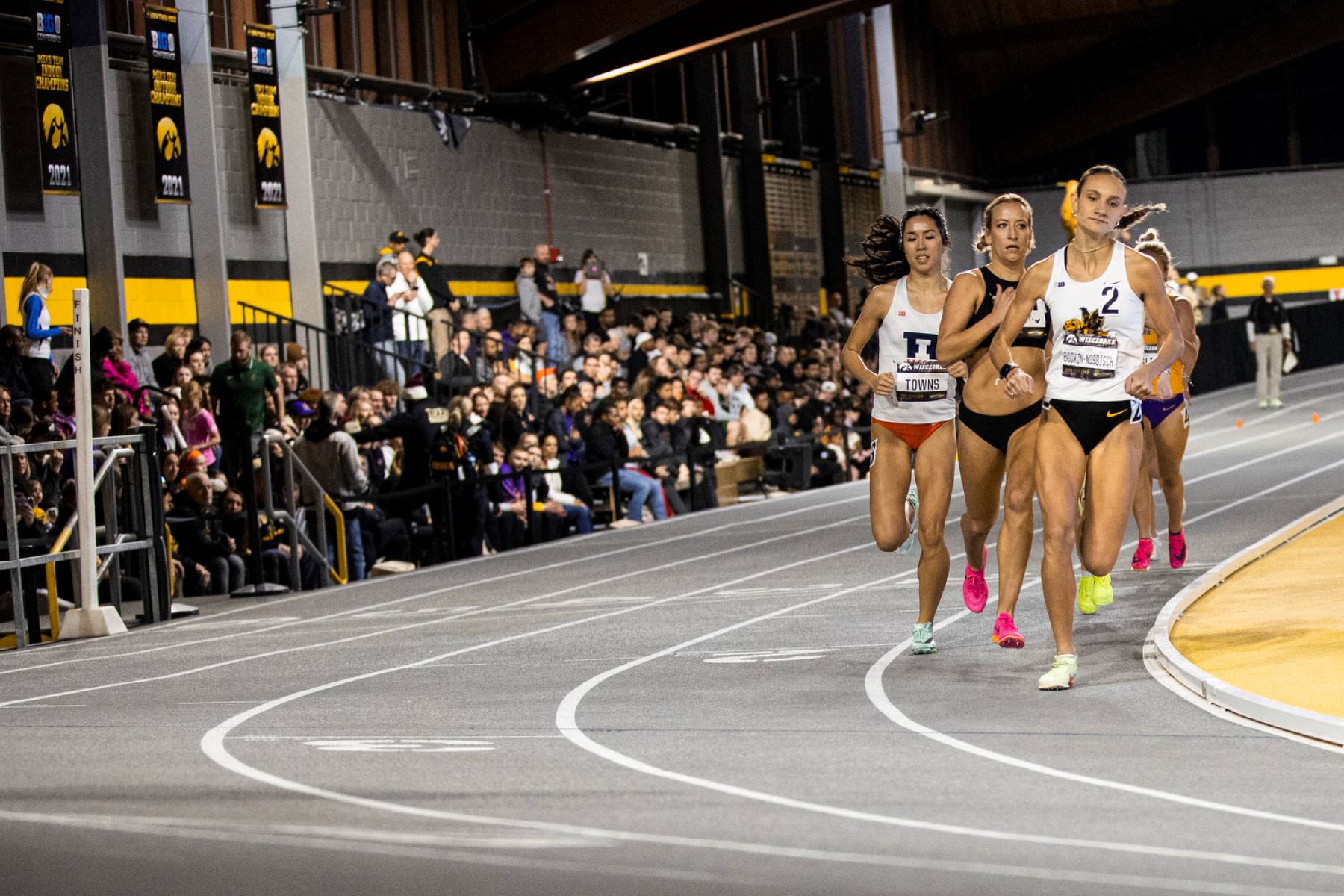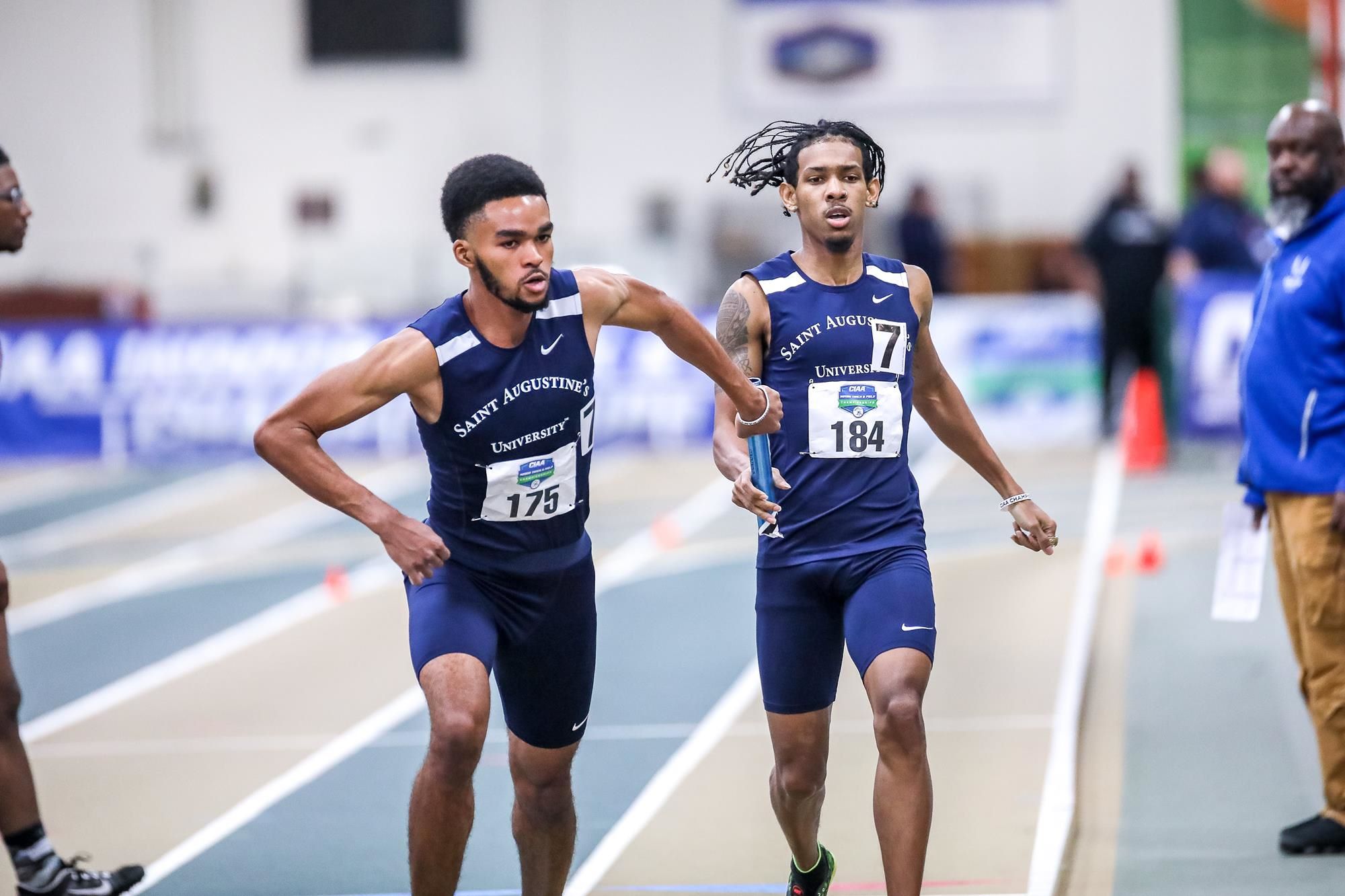

Featured
What Is DMR In Track And Field
Modified: January 22, 2024
Find out what DMR (Distance Medley Relay) is in track and field. Learn about its rules and events. Discover why DMR is a featured event in the sport.
Introduction
Welcome to the dynamic and exciting world of track and field. One of the most captivating events within this sport is the DMR, short for Distance Medley Relay. While you may be familiar with traditional relays, the DMR adds an intriguing twist by incorporating different distances into the race.
So, what exactly is the DMR? In simple terms, it is a relay race comprised of four team members, each running a different distance. These distances typically include a 1,200 meters, a 400 meters, an 800 meters, and finally a 1,600 meters. Together, these four legs make up a total distance of 4,000 meters, or just under 2.5 miles.
The DMR is a unique event that demands a combination of speed, endurance, and strategic thinking. It not only showcases individual running abilities but also highlights the importance of teamwork and coordination. With each team member relying on the others, the DMR brings together the best of both worlds – individual performance and collective success.
Originally, the DMR was introduced as an indoor track event, but it has gained popularity in outdoor competitions as well. This thrilling event has captivated audiences around the world and has become a staple in major track and field competitions.
Throughout this article, we will explore the fascinating history of the DMR, delve into the rules and regulations, discuss training strategies, and examine the benefits and challenges that come with participating in this exhilarating event.
Definition of DMR
The Distance Medley Relay (DMR) is a track and field event that consists of a team of four runners each covering a different distance. These distances are typically 1,200 meters, 400 meters, 800 meters, and 1,600 meters, totaling 4,000 meters. The DMR is a unique blend of speed, endurance, and teamwork, showcasing the versatility and capabilities of each athlete within the team.
The relay begins with the first runner completing the 1,200-meter leg. This distance requires a balance between endurance and speed, as runners need to pace themselves for a strong start. The baton is then passed off to the second runner who completes the fast and intense 400-meter leg. This portion of the race demands explosive speed and agility, putting the runner”s sprinting abilities to the test.
Next, the third runner takes on the 800-meter leg, requiring a combination of speed and endurance. This leg serves as a pivotal point in the race, as the runner aims to maintain momentum and hand off the baton to the anchor leg. Finally, the anchor leg, covering the 1,600 meters, is often considered the most challenging and crucial part of the DMR. The anchor runner must possess both endurance and a strong kick to bring the team to the finish line in a competitive position.
Designed to test a team”s overall strength, the DMR highlights the importance of effective baton exchanges, strategy, and team coordination. Timing and precision play a significant role in ensuring smooth transitions, as any mishaps during handoffs can result in valuable time lost. Each team member”s performance contributes to the team”s overall success, making the DMR a true showcase of both individual talent and collective effort.
Competing in the DMR requires a diverse skill set and a high level of fitness. Athletes need to possess the speed and explosiveness of a sprinter, coupled with the endurance and stamina of a distance runner. Precise pacing, effective communication, and a strong finishing kick are all essential elements in mastering this unique event.
As you delve deeper into the world of track and field, the DMR offers an exhilarating experience that combines the best of both individual and team accomplishments. Embrace the challenge, and immerse yourself in the excitement of the Distance Medley Relay!
History of DMR in Track and Field
The roots of the Distance Medley Relay (DMR) can be traced back to the early 20th century. The concept of incorporating different distances into a relay race emerged as a way to showcase athletes with varying specialties, creating an exciting and challenging event for both competitors and spectators.
The DMR made its debut in organized track and field competitions in the United States in the 1910s. Its popularity quickly spread, and it became a prominent event in both collegiate and professional meets. During this time, the DMR consisted of the same distances we see today – 1,200 meters, 400 meters, 800 meters, and 1,600 meters.
In the early years, the DMR was primarily an outdoor event, but in the 1960s, it gained popularity as an indoor track event. Indoor meets provided a controlled environment that allowed for more precise timing, attracting a larger audience and increasing the competitive nature of the event.
Over the years, the DMR has become a staple in major track and field competitions globally. It is featured in prestigious events such as the Olympics, World Championships, and NCAA Championships, allowing athletes from all around the world to compete and showcase their skills.
Recognition of extraordinary performances in the DMR has led to the establishment of records and milestones. These records serve as benchmarks for future athletes to strive toward, creating a sense of achievement and motivation. Notable records include the men”s and women”s world records, both set during indoor competitions.
In addition to the individual accomplishments, the DMR has seen remarkable team achievements. Collegiate programs, in particular, have excelled in the DMR event, often using it as an opportunity to showcase their talent and depth. These prestigious races have become highlights of collegiate track and field competitions, fueling intense rivalries and fostering a sense of community and pride among athletes and fans.
With the ever-evolving nature of track and field, the DMR continues to captivate audiences and push the boundaries of athletic performance. Its rich history highlights the innovation and creativity within the sport, showcasing the ability to adapt and evolve while maintaining the core aspects that make the event so thrilling.
As we move forward, the DMR will undoubtedly continue to be a cherished event that perpetuates tradition while inspiring future generations to strive for greatness in the world of track and field.
Rules and Regulations of DMR
The Distance Medley Relay (DMR) follows specific rules and regulations to ensure fair and competitive races. These guidelines are established by governing bodies such as World Athletics and the NCAA, and they outline the proper execution and conduct of the event.
Here are some of the key rules and regulations that govern the DMR:
- Team Composition: A DMR team consists of four members, typically referred to as runner 1, runner 2, runner 3, and the anchor leg runner. Each team member covers a specific distance.
- Race Order: The DMR starts with the runner 1 completing the 1,200-meter leg, followed by runner 2 covering the 400-meter leg, runner 3 running the 800-meter leg, and the anchor leg runner finishing with the 1,600-meter leg.
- Handoff Zone: The exchange or handoff of the baton must take place within a designated zone called the exchange zone. This zone ensures that exchanges occur fairly and safely. Failing to complete handoffs within the exchange zone can result in disqualification.
- Baton Passing: The baton must be passed from one runner to another within the exchange zone. It is essential for the baton to be carried, not thrown, as throwing the baton can lead to disqualification.
- Foul Lines: The DMR may have marked foul lines on the track. Runners must stay within their allocated lane and not step on or over the foul lines. Violating the foul line rule can result in disqualification.
- False Starts: False starts are subject to a specific number of warnings or disqualification. Runners must maintain a legal starting position until the race begins to ensure fair competition.
- Timing and Scoring: Accurate timing and scoring are crucial in determining the winners of the DMR. Finish times are recorded, and the team that completes the relay in the shortest overall time is declared the winner.
- Protests and Appeals: If teams feel there has been a violation of the rules or an unfair advantage, they have the right to lodge a protest or appeal according to the specific procedures set forth by the governing body.
It is essential for athletes and teams to familiarize themselves with these rules and regulations before participating in DMR events. By adhering to these guidelines, athletes can ensure fair competition and maintain a level playing field for all.
As with any sport, the rules and regulations of the DMR are subject to periodic updates and modifications by governing bodies. It is important to stay up-to-date with the latest rule changes to remain compliant and to continue enjoying the excitement and thrill of this captivating event.
DMR Events in Major Competitions
The Distance Medley Relay (DMR) holds a prominent place in major track and field competitions around the world. It is featured in prestigious events that attract top athletes and capture the attention of fans worldwide.
Here are some of the major competitions that include DMR events:
- Olympic Games: The Olympic Games, held every four years, showcase the pinnacle of athletic excellence. The DMR event has traditionally been included in the program, allowing nations to compete for gold, silver, and bronze medals. Athletes representing their countries strive to achieve glory in this highly anticipated event.
- World Championships: The World Athletics Championships, held every two years, bring together the best track and field athletes from around the globe. The DMR is a standout event, testing the mettle of teams and captivating audiences with thrilling displays of speed and endurance.
- NCAA Championships: The National Collegiate Athletic Association (NCAA) organizes annual championships for student-athletes in the United States. The DMR is a highlight of these championships, with collegiate programs showcasing their depth and talent, creating intense rivalries and providing a platform for athletes to shine.
- IAAF Diamond League: The IAAF Diamond League consists of elite international track and field competitions, held across several cities throughout the season. The DMR is featured in select meetings, offering athletes an opportunity to compete against some of the best in the world.
- IAAF World Relays: The IAAF World Relays is a relatively new event, held every two years, dedicated to relay races. The DMR is one of the exciting races that takes place during this championships, contributing to the thrilling atmosphere and showcasing the extraordinary abilities of relay teams.
- National Championships: Many countries hold their own national championships, providing a stage for local athletes to compete and showcase their skills. The DMR is often included as a marquee event, allowing national teams to establish dominance and select athletes for international competitions.
These major competitions not only offer opportunities for athletes to demonstrate their abilities but also provide a platform for teams and nations to showcase their talent and competitive spirit. They create a sense of camaraderie and excitement among athletes and fans alike.
The DMR events in these competitions are highly anticipated and are often a testament to the sport’s rich history and tradition. Athletes train rigorously to qualify for these events and have the honor of representing their country or team on the international stage.
As a spectator, watching the DMR events in major competitions is a thrilling experience. The competitive nature of these races, combined with the raw athleticism and strategic team dynamics, make for an unforgettable spectacle.
Whether it’s the Olympic Games, World Championships, or other prestigious meets, the DMR events add a layer of excitement and spectacle to these already thrilling track and field competitions, showcasing the incredible talent and determination of the athletes involved.
Training and Strategies for DMR
Preparing for the Distance Medley Relay (DMR) requires a strategic training approach that encompasses a combination of speed, endurance, and teamwork. Each team member must possess specific skills and train accordingly to maximize their performance in their respective legs of the race. Additionally, developing effective strategies is crucial to ensure seamless baton exchanges and a strong finish.
Here are some key aspects to consider when training for the DMR:
- Individual Training: Each team member needs to focus on training tailored to their specific leg of the DMR. The first leg, covering 1,200 meters, requires endurance and speed. The second leg, a fast 400 meters, demands explosive speed and quick acceleration. The third leg, an 800-meter dash, necessitates a balance between speed and endurance. Finally, the anchor leg, completing the 1,600 meters, calls for a strong finishing kick and mental resilience. Individual training should focus on developing the necessary qualities for each specific leg.
- Team Bonding and Practice: Building strong communication and trust among team members is essential for smooth baton exchanges. Dedicated practice sessions should focus on refining handoff techniques and perfecting timing. Team members must be well-coordinated to ensure seamless transitions within the designated exchange zones.
- Strategic Planning: Developing a race strategy is crucial for a successful DMR. Understanding each team member’s strengths and weaknesses allows for an effective allocation of legs. Strategic decisions such as deciding when to make a move, setting a pace, or selecting the order of team members can significantly impact the team’s performance. Coaches and team leaders often play a vital role in formulating an effective race strategy.
- Simulated Race Scenarios: Incorporating race simulations into training provides an opportunity for team members to experience the intensity and pressure of an actual DMR. These simulations help identify any weaknesses or potential issues that need to be addressed before competitive events. Additionally, practicing under race-like conditions can improve mental preparedness and enhance performance when it matters most.
- Strength and Conditioning: Building overall strength and endurance is crucial for DMR success. Incorporate a strength and conditioning program that targets the specific demands of each leg in the DMR. Focus on building stamina, speed, and explosiveness through a variety of training methods such as interval workouts, tempo runs, and strength exercises.
Remember, success in the DMR comes not only from individual talent but also from the cohesion and collective effort of the entire team. Ensuring that each team member is prepared and properly trained for their leg is key to achieving optimal results.
By implementing a comprehensive training plan that addresses the specific requirements of the DMR and combining it with effective strategies, teams can position themselves for success in this thrilling and challenging relay event.
Role of Each Team Member in DMR
In the Distance Medley Relay (DMR), each team member has a crucial role to play in the team’s overall success. The combination of different distances and unique skill sets required for each leg makes it essential for each team member to understand their role and execute it to the best of their abilities. Let’s dive into the specific roles of each team member:
- Runner 1 (1,200 meters): The first leg of the DMR, covering 1,200 meters, sets the pace for the team. Runner 1 needs a strong combination of endurance and speed. They must establish a solid start, maintain a steady pace, and provide a smooth handoff to the next runner. Runner 1 often sets the tone for the team, aiming to put the team in a competitive position as they hand off the baton.
- Runner 2 (400 meters): The second leg of the DMR, the 400 meters, requires explosive speed and quick acceleration. Runner 2’s goal is to maintain the team’s momentum and build on the lead or regain ground if necessary. They must execute a smooth handoff from Runner 1, sprint around the track, and pass the baton efficiently to Runner 3.
- Runner 3 (800 meters): The third leg, covering 800 meters, demands a balance between speed and endurance. Runner 3 needs to maintain the team’s position, running tactically and effectively. They must navigate any challenges on the track, such as strategic positioning and avoiding getting boxed in, while conserving enough energy for a strong handoff to the anchor leg.
- Anchor Leg Runner (1,600 meters): The final leg of the DMR, the anchor leg, covers 1,600 meters and is often considered the most challenging. The anchor leg runner must possess both endurance and a strong finishing kick. Their role is to bring the team to the finish line in a competitive position or, if behind, to make up ground and secure a strong finish. The anchor leg runner often faces fierce competition from other teams’ top runners and must navigate strategic decisions to secure the team’s success.
Communication and coordination among team members are crucial in the DMR. Each runner must be aware of their position in the race and the progress of their teammates. Clear communication about positioning, handoff zones, and overall strategies is essential to optimize team performance. Supporting and encouraging each other throughout the race fosters team spirit and maximizes the team’s potential.
Coaches and team leaders play a vital role in guiding and shaping each team member’s role in the DMR. They analyze and assess the strengths and weaknesses of the athletes to assign each team member to the leg that best suits their abilities. They also provide guidance on race strategies, pacing, and handoff techniques to maximize the team’s performance.
The success of a DMR team depends not only on the individual talent and skill of each team member but also on their ability to work together as a cohesive unit. By understanding and fulfilling their specific roles, each team member contributes to the team’s overall success in this exhilarating relay event.
Benefits and Challenges of DMR
The Distance Medley Relay (DMR) offers a unique and thrilling experience for both athletes and spectators. This captivating event presents a range of benefits and challenges that contribute to its appeal and demand dedication and perseverance from the participating teams. Let’s explore the benefits and challenges of the DMR:
Benefits of DMR:
- Showcasing Teamwork: The DMR places importance on the collective efforts of a team. It celebrates the power of teamwork, as each member contributes to the team’s overall success through synchronized baton exchanges and strategic pacing.
- Multiple Distances and Skills: The DMR incorporates a variety of distances, showcasing the versatility and capabilities of athletes. It allows competitors of different running specialties to come together and showcase their respective skills in a single event.
- Individual Performance: The DMR offers an opportunity for athletes to compete individually while still contributing to a team. Each team member’s performance is crucial, and exceptional individual efforts can greatly impact the team’s overall ranking.
- Excitement and Spectacle: The DMR provides a thrilling spectacle for athletes and spectators. The combination of intense bursts of speed and enduring efforts creates an exciting and unpredictable race that keeps audiences on the edge of their seats.
- Mental and Physical Challenge: The DMR tests athletes mentally and physically. From effectively executing handoffs to maintaining optimal pacing, athletes must stay focused and adapt to the challenges presented by the race.
Challenges of DMR:
- Coordination and Timing: One of the primary challenges in the DMR is executing smooth baton exchanges within the designated exchange zones. Precise coordination, timing, and practice are crucial to minimize the risk of dropping the baton or incurring penalties.
- Varying Running Specialties: Each leg of the DMR requires different running skills, which can pose a challenge when assembling a team. Coaches must strategically assign athletes to the appropriate leg, ensuring a balanced team that can excel in each distance.
- Physical and Mental Fatigue: The DMR demands endurance and stamina, as well as mental resilience. Athletes must navigate the physical fatigue of running their leg while staying mentally focused, particularly during critical moments such as handoffs and maintaining the team’s overall strategy.
- Competition and Strategy: The DMR brings together formidable competitors, making the race highly competitive. Teams must analyze their opponents’ strengths and weaknesses and develop effective race strategies to gain a competitive advantage.
- Pressure and Timing: The DMR often requires precise timing and quick decision-making, especially during baton exchanges and tactical moves throughout the race. The pressure to execute flawlessly while maintaining speed and positioning can be mentally and physically demanding for athletes.
Despite the challenges that the DMR presents, the benefits far outweigh them for those who embrace the event. Athletes are rewarded with a sense of accomplishment, the thrill of competition, and the chance to showcase their skills within a team environment. The DMR offers a unique and exhilarating experience that pushes athletes to their limits and inspires them to strive for excellence.
Conclusion
The Distance Medley Relay (DMR) occupies a special place in the world of track and field. It combines speed, endurance, teamwork, and strategy into a captivating event that showcases the versatility and capabilities of athletes. As we have explored in this article, the DMR has a rich history, with its origins dating back to the early 20th century. Over the years, it has become a staple in major competitions, including the Olympic Games, World Championships, and NCAA Championships, captivating both athletes and spectators around the world.
Participating in the DMR offers numerous benefits, such as celebrating teamwork, showcasing individual talent, and providing an exciting spectacle for fans. However, it also poses challenges, including coordination and timing, varying running specialties, physical and mental fatigue, and the need for strategic planning. These challenges, though demanding, contribute to the thrill and allure of the event, pushing athletes to push their limits and find new levels of performance.
To excel in the DMR, athletes must undergo rigorous training, focusing on individual skills while also developing a strong team dynamic. Coaches and team leaders play a vital role in strategizing race plans, optimizing each team member’s performance, and fostering a sense of unity among the athletes.
As the DMR continues to evolve, it remains a compelling event that showcases the best of track and field. Athletes will continue to rise to the challenge, overcoming obstacles, and demonstrating their dedication, skill, and determination. The DMR allows us to witness the power of teamwork, the brilliance of individual performances, and the unrelenting pursuit of excellence.
So, whether you are an athlete, a coach, or an avid spectator, immerse yourself in the excitement and energy of the Distance Medley Relay. Witness the beauty of synchronized teamwork, the display of raw athletic talent, and the thrill of a race that combines strategy, speed, and endurance. Embrace the history, the challenges, and the triumphs of the DMR and be captivated by this enthralling event that continues to inspire and captivate us all.
